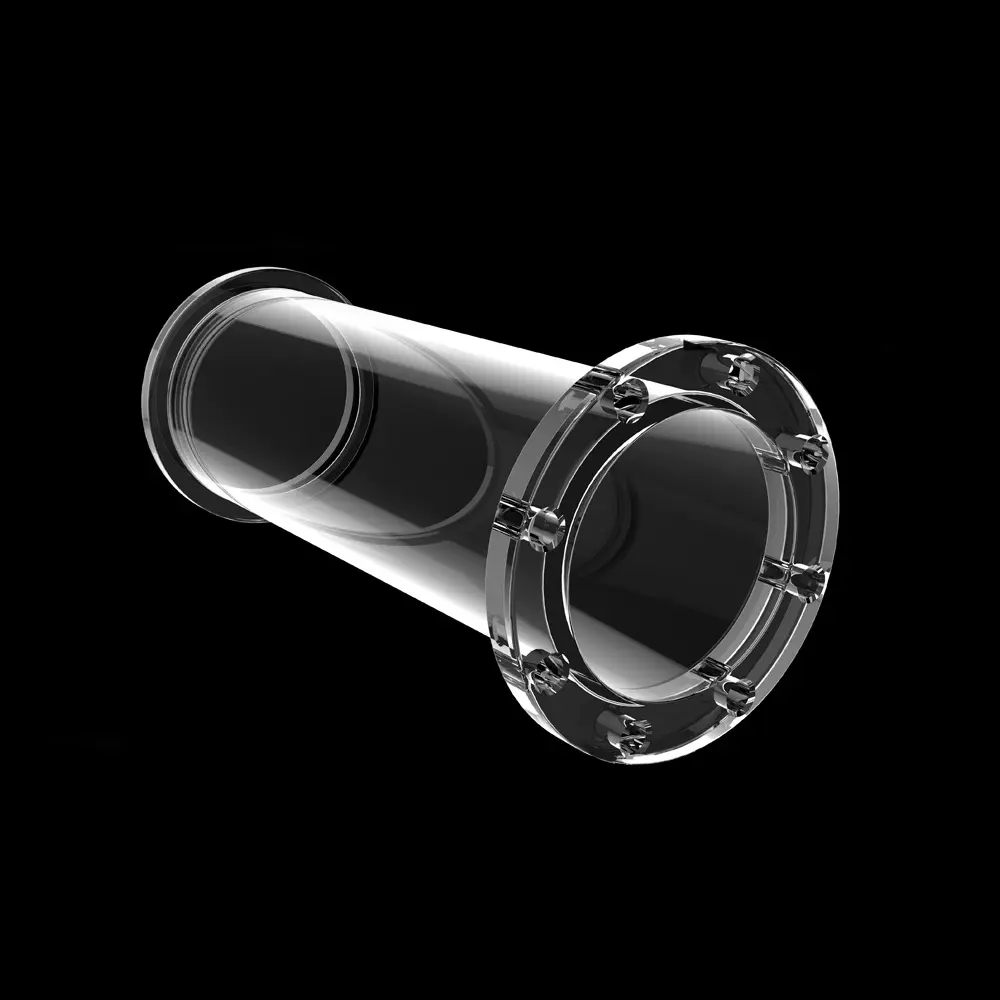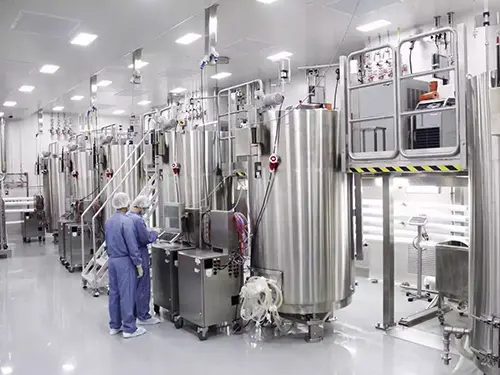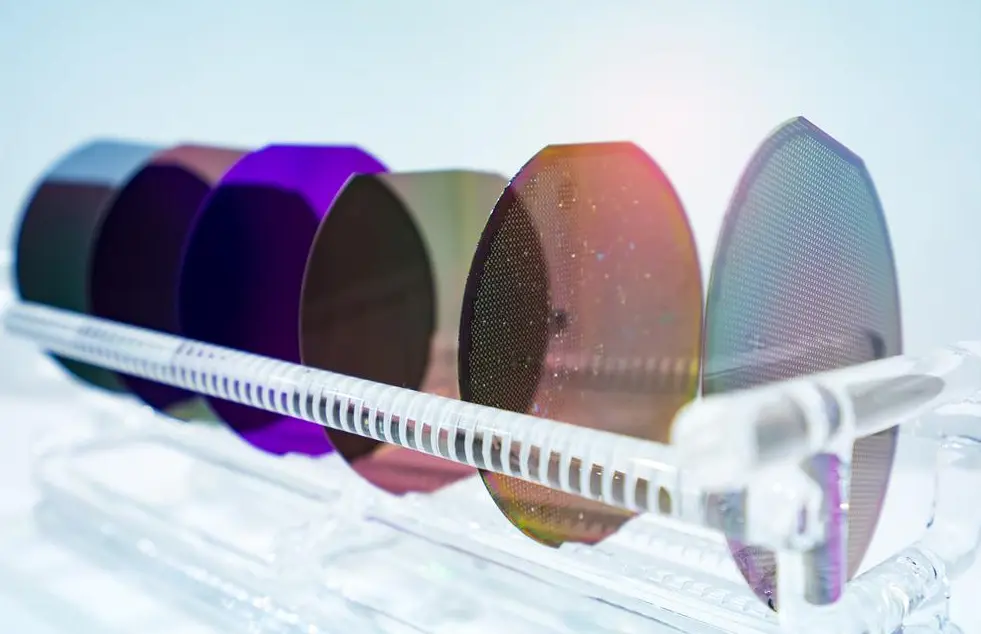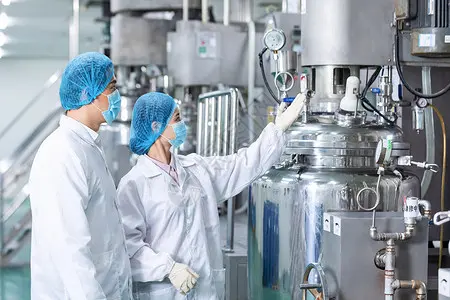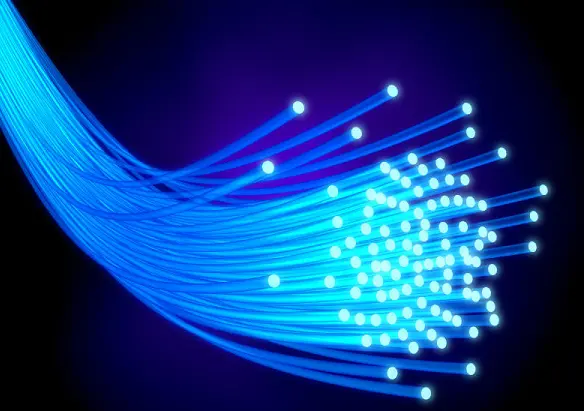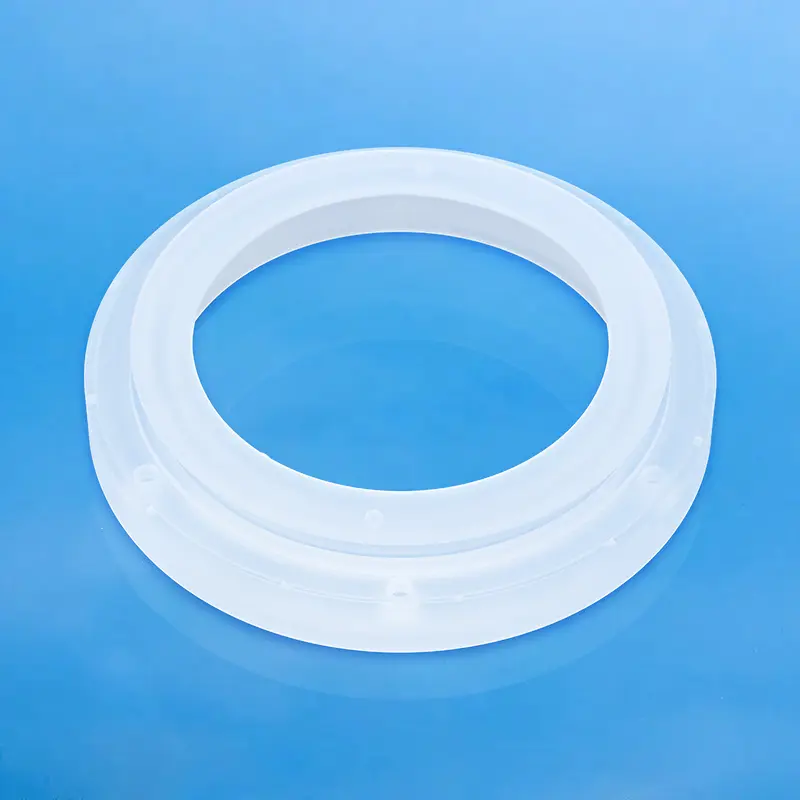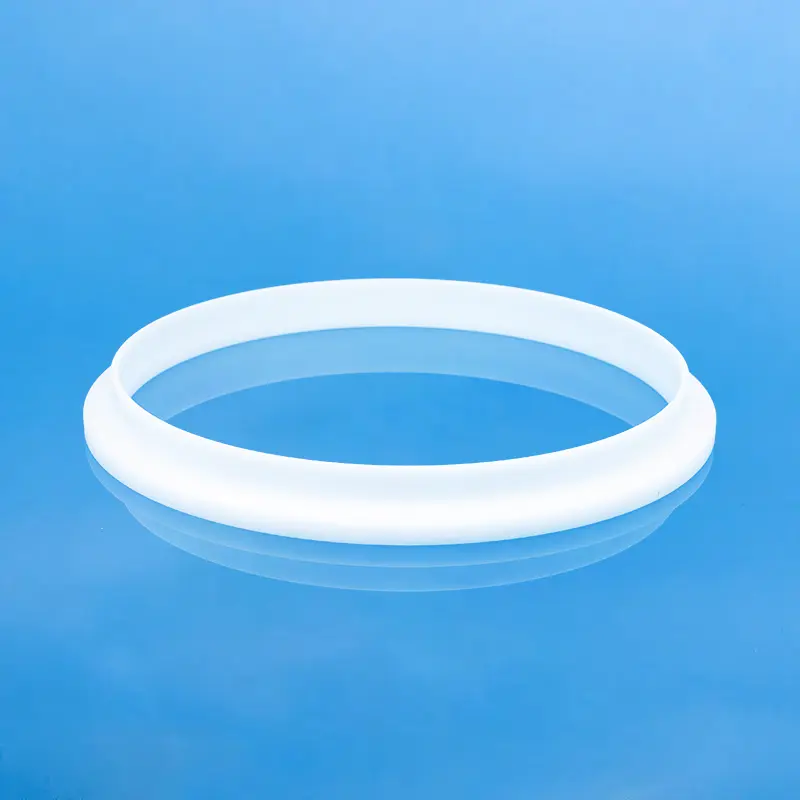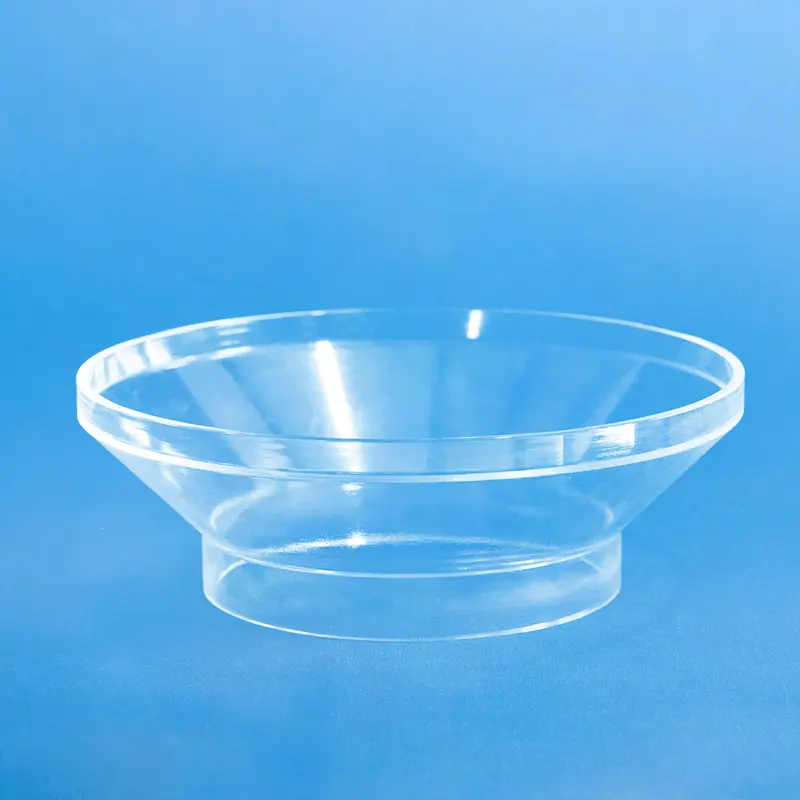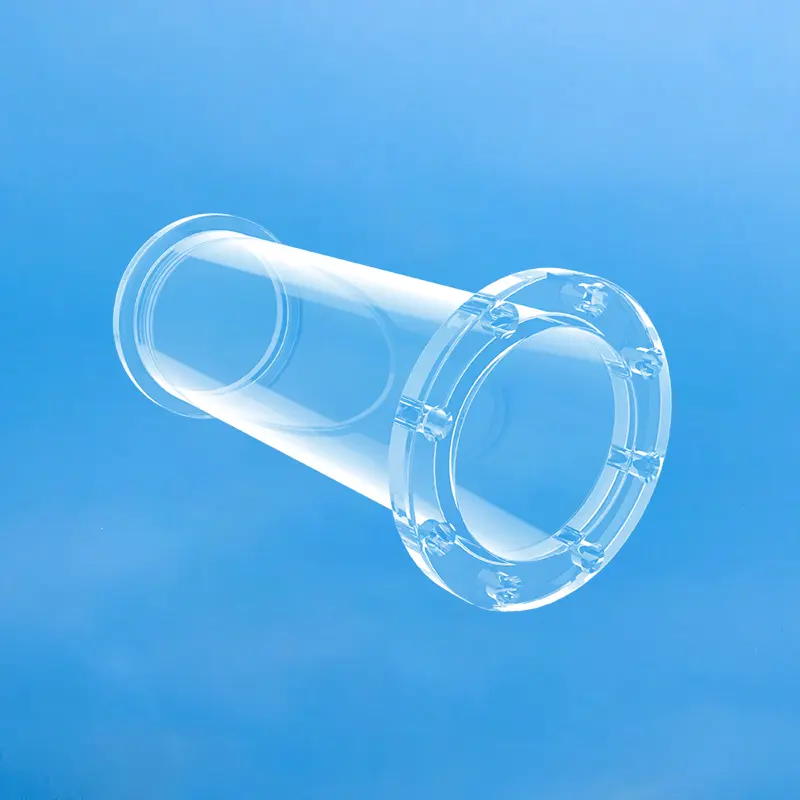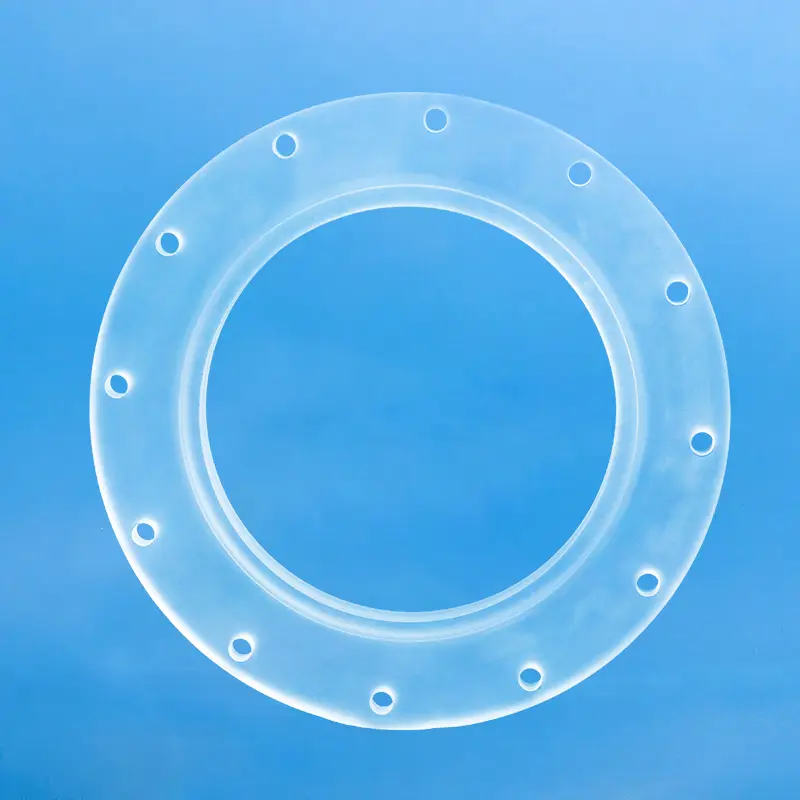Our quartz flange tubes, also known as fused silica flanged pipes, are precision-engineered for critical applications demanding extreme purity, high temperature resistance, and vacuum compatibility. Ideal for semiconductor, optics, and laboratory equipment, they ensure reliable, corrosion-resistant connections. Custom designs are available to meet your exact specifications.
| Property Content | Property Values |
|---|---|
| SiO2 | 99.99% |
| Density | 2.2×10³ kg/cm³ |
| Hardness | 5.5 - 6.5 Mohs' Scale 570 KHN 100 |
| Tensile Strength | 4.8×10⁷ Pa (N/mm2) (7000 psi) |
| Compression Strength | >1.1×10⁹ Pa (160,000 psi) |
| Coefficient of Thermal Expansion | 5.5×10⁻⁷ cm/cm·°C (20°C-320°C) |
| Thermal Conductivity | 1.4 W/m·°C |
| Specific Heat | 670 J/kg·°C |
| Softening Point | 1730°C (3146°F) |
| Annealing Point | 1210°C (2210°F) |
| Strain Point | 1120°C (2048°F) |
| Work Temperature | 1200°C (2192°F) |
| Electrical Resistivity | 7×10⁷ ohm cm (350°C) |
| Size | Customized |
| Logo | Customized Logo Accept |
High-Temperature Performance
Quartz flange pipes can withstand extremely high-temperature environments, typically suitable for applications exceeding 1000°C, making them an ideal choice for high-temperature process flows.
Chemical Stability
The quartz material exhibits excellent resistance to various chemical substances, including strong acids, strong bases, and organic solvents. This characteristic makes quartz flange pipes particularly useful in the chemical and pharmaceutical industries.
High Purity and Low Impurities
Quartz flange pipes are made from high-purity quartz glass, which means they contain very low levels of impurities. This is crucial for applications requiring high-purity environments, such as semiconductor manufacturing.
Excellent Sealing and Mechanical Strength
Quartz flange pipes are precision-engineered to provide excellent sealing performance while maintaining high mechanical strength, allowing them to operate stably in high-pressure environments and reduce the risk of leaks.
Application Scenario
High-Temperature Chemical Processing
Quartz flange pipes are essential in chemical processing plants where high-temperature, corrosive substances are common. They are used in reactors, distillation columns, and piping systems where they ensure reliable transfer and containment of aggressive chemicals at elevated temperatures, such as in the production of specialty chemicals or pharmaceuticals.
Semiconductor Manufacturing Clean Rooms
Due to their high purity and low impurity levels, quartz flange pipes are utilized in clean rooms in semiconductor manufacturing. They are ideal for piping gases and liquids during critical fabrication steps where any contamination can significantly affect the final product. Examples include processes like chemical vapor deposition (CVD) and etching where the purity of the delivery system is crucial.
High-Purity Pharmaceutical Production
In the pharmaceutical industry, quartz flange pipes are crucial for transferring highly sensitive and corrosive pharmaceutical ingredients. Their chemical inertness ensures that the materials do not react with or contaminate the drugs, while their high-temperature stability enables sterilization processes, ensuring the highest purity and safety standards in drug production.
Fiber Optic Production
In the production of fiber optic cables, quartz flange pipes are used to transfer high-purity gases and materials at high temperatures. The controlled environment needed for fiber optic production benefits from the high-temperature and chemical resistance of quartz, as well as its purity, ensuring that the resulting fibers meet demanding standards for signal transmission.
Quartz flange pipes offer several key advantages, including exceptional high-temperature resistance (typically exceeding 1000°C), excellent chemical stability against a wide range of corrosive substances, high purity and low impurity levels ideal for sensitive applications, and superior sealing and mechanical strength for reliable performance under pressure. These properties make them ideal for demanding environments where traditional materials may fail.
Quartz flange pipes are commonly utilized in industries such as chemical processing, pharmaceutical manufacturing, semiconductor fabrication, and fiber optic production. In chemical processing plants, they handle corrosive chemicals and high-temperature environments. In semiconductor manufacturing, their high purity prevents contamination of sensitive electronic components. In pharmaceutical and fiber optic production, their chemical inertness and temperature resistance are crucial for maintaining quality and process integrity.
The expected lifespan of quartz flange pipes depends on various factors such as operating temperature, pressure, chemical exposure, and handling procedures. With proper usage and regular inspection, quartz flange pipes can have a long service life. Routine maintenance should include checking for cracks, wear, or contamination, and cleaning the pipes as needed. Depending on the specific environment and usage, a replacement schedule should be established to ensure ongoing reliable performance.
Frequently asked questions
We specialize in the end-to-end manufacturing of high-purity quartz glass components. Our core product lines include:
Quartz Tubing & Rods: A wide range of diameters and specifications.
Quartz Plates & Discs: Precision-cut and polished for optical and industrial use.
Quartz Labware: A full suite of standard and custom glassware, including beakers, flasks, and boats.
Semiconductor-Grade Quartz: High-purity components like process tubes and carriers for semiconductor fabrication.
Custom Fabricated Components: We can produce complex parts tailored to your unique designs and specifications.
Yes. Custom fabrication is at the core of our business. With over a decade of specialized experience, we partner with companies to provide expert OEM/ODM services. Our capabilities include welding, grinding, drilling, polishing, bending, and other precision processing techniques to create components that meet your exact requirements.
Quality is paramount in our manufacturing process. We are an ISO 9001:2015 certified manufacturer, ensuring that our processes meet international quality management standards.Our products also undergo rigorous SGS testing for purity and performance. We use high-purity raw materials (up to 99.998% SiO2) to produce fused quartz and fused silica products with exceptional thermal stability, high-temperature resistance, and chemical inertness.
We've streamlined our process to be as efficient as possible:
Submit Your RFQ: Send us your technical drawings, specifications, and requirements via our website contact form or email.
Rapid Response: You can expect an initial response within minutes and detailed communication within half an hour.
Design & Proposal: We will deliver a detailed design proposal and a competitive quote within 24 hours.
Prototyping & Production: Upon approval, we move swiftly from prototyping to full-scale production to meet your deadlines.
Partnering with Aoxin Quartz offers several key advantages:
Proven Expertise: With 10+ years in the industry, we have the technical knowledge to tackle complex challenges.
One-Stop Solution: We manage the entire production process, from sourcing high-purity raw materials to fabricating and finishing complex components.
Competitive Value: Located in a major quartz production hub, we leverage an efficient supply chain and advanced manufacturing to offer exceptional quality at a competitive price point.
Dedicated Partnership: Over 90% of our clients become long-term partners. We are committed to your success through responsive service, reliable quality, and innovative solutions.

